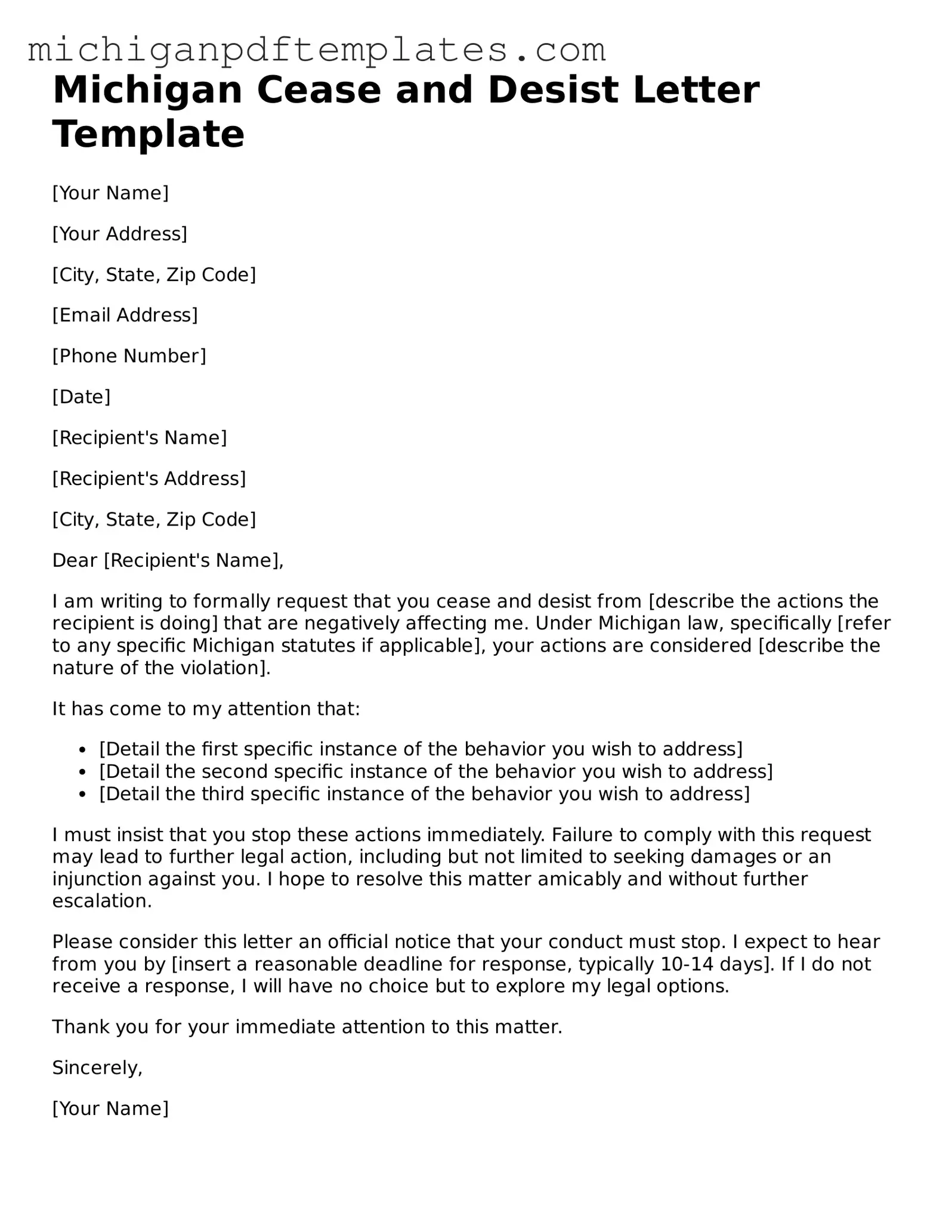In the realm of legal communications, a Michigan Cease and Desist Letter serves as a crucial tool for individuals and businesses seeking to address unwanted actions or behaviors. This letter is designed to formally request that a party stop a specific activity that is believed to infringe upon rights or cause harm. It typically outlines the nature of the objectionable conduct, references any relevant laws or agreements, and provides a clear demand for the cessation of such actions. The letter may also indicate the potential consequences of failing to comply, which can include legal action. By utilizing this form, individuals can assert their rights while maintaining a professional tone, potentially resolving disputes without the need for litigation. Understanding the key components of the Michigan Cease and Desist Letter is essential for anyone looking to navigate these challenging situations effectively.
